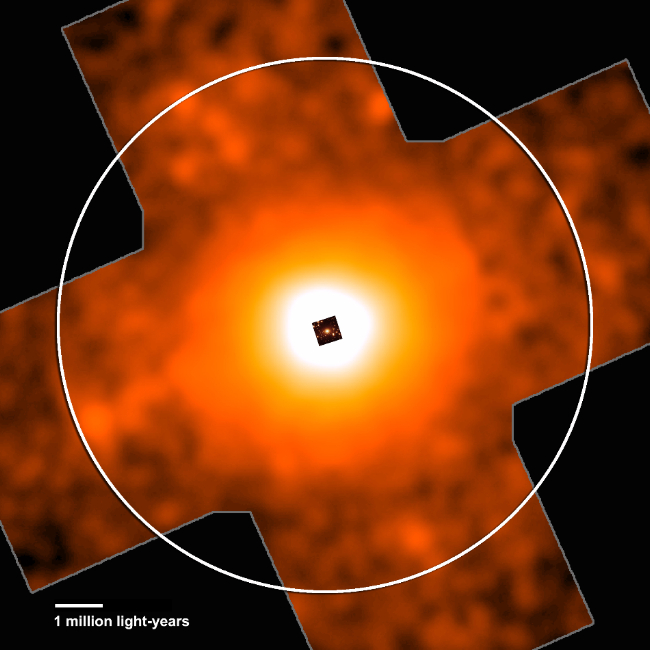
 Credit: NASA/ISAS/Suzaku/M. George, et al.
Credit: NASA/ISAS/Suzaku/M. George, et al.
Outskirts
Clusters of galaxies are the largest gravitationally bound structures in the Universe. But how large are they? Clusters are usually identified by a high spatial density of optical galaxies, but these optical pictures only tell a small part of the story. Intergalactic gas falls into the deep gravitational potential well at the center of a cluster, heating up and emitting X-rays. The X-ray emission from this hot gas can be used to trace a cluster's outer reaches, where the density of optical galaxies may be very low. The image above shows an X-ray image of the cluster PKS 0745-191 taken with the Suzaku X-ray observatory. Suzaku's orbit gives it an especially low background contamination, key for observing faint emission in the cluster's outer regions. For comparison an HST image of the cluster core is shown in the inset, where the highest X-ray emission occurs. This Suzaku image is the first observation of hot X-ray emitting gas beyond a cluster's "Virial radius", the point where the gas has relaxed into equilibrium. Such studies help astronomer's test their assumed relations between the X-ray emitting gas properties and the total cluster mass.
Published: August 31, 2009
<
HEA Dictionary ● Archive
● Search HEAPOW
● Other Languages
● HEAPOW on Facebook
● Download all Images
● Education ● HEAD
>
Each week the HEASARC
brings you new, exciting and beautiful images from X-ray and Gamma ray
astronomy. Check back each week and be sure to check out the HEAPOW archive!
Page Author: Dr. Michael F. Corcoran
Last modified Monday, 26-Feb-2024 17:36:16 EST


